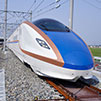Legal changes eyed for all-night dancing
Japan, reports Shukan Toyo Keizai (23 August), is a “country where you cannot dance”.
That is not entirely true, of course. It refers to the Entertainment Business Control and Improvement Law, which regulates venues ranging from dance schools to strip clubs.
Having come into effect in 1948, to reflect concerns of the day regarding the impact such venues might have on public morality, the law places restrictions on both after-midnight revelry and dancing by teenagers.
Now, at long last this situation may be changing. In July, the National Police Agency formed a group to review the existing law, and public meetings on the topic held by a team of civilian advisors were scheduled for late August, according to the article.
Recommendations for revisions that may have a pronounced effect on nightlife, particularly in Tokyo and other major cities, may be submitted to the Diet later this year for deliberation.
Specifically, the reformers are proposing that the ban on dancing after midnight—or 1am in commercial areas—be extended to 6am, and that minors—in Japan, those under the age of 20—who are currently banned from such venues, be allowed to dance until 10pm.
Furthermore, the recommendations include a request that requirements for the dimensions of dance floors be reduced from the current minimum of 66m2 to 9.5m2.
Spearheading the move is House of Councillors and Liberal Democratic Party of Japan member Kenji Kosaka, who, since 2013, has chaired Dance Giren, an extra-partisan group promoting revision of the law. If his fellow legislators cannot agree on revisions, Kosaka has vowed to sponsor a new law.
“Dancing by couples is established culture, and foreigners are surprised to be told that [under certain circumstances] it’s banned in Japan”, said Masashi Tanaka, chief executive of LatinWorks, Co., Ltd., which operates the Paraiso Latin dining club in Tokyo’s Roppongi district. “Even when we explain it to them, they can’t understand what we’re talking about”.
According to Tanaka, under the current tight restrictions, about two months are required for a club to obtain a permit for dancing.
Data from the National Police Agency indicates the nationwide number of cabarets, nightclubs and dance halls with permits for dancing peaked at around 6,000 in 2004, but by 2012 had declined by nearly half.
Those opposed to revising the law, and in favour of maintaining the strict regulations, warn that shady operators are likely to move in, and the resulting problems will create more work for law enforcement.
Along with not wishing to disappoint athletes and their supporters who come here for the 2020 Olympic and Paralympic Games, optimists argue that deregulation would spawn new business opportunities at hotels and other venues.
“Revising the law would open up potential for considerable economic impact”, Kosaka said. “Ordinary companies may choose to launch new businesses that organise events, having dancing at their core”.
Self-service set to help customers and shops
“Selfridges to be introduced at convenience stores in stations”. Really? On first seeing the headline in the Nihon Keizai Shimbun (22 August), this writer did a double take.
But, on further perusal, he realised—to his great disappointment—that serufureji was not a reference to Selfridges & Co. but, rather, to the Japanese term for “self-service cash registers”.
JR East Japan Retail Net Co., Ltd., operator of Newdays convenience stores located on railway station premises, plans to have some 150 outlets equipped with the system, which will be up and running by next spring.
Shops with the serufureji system will mostly be in stations on the Yamanote, Chuo and Keihin Tohoku lines. As the main routes for Tokyo commuters, these shops are particularly busy at peak times.
Eventual expansion is planned for cities on Tokyo’s periphery, including Chiba, Omiya and Yokohama, as well as in more remote parts of the network, such as Sendai and Niigata.
The system allows transactions to be made by scanning the price tag on the merchandise with a barcode reader, which then displays on the register’s screen the name and price of the item. Payment can be made with prepaid IC cards issued by various railway firms.
The system is expected to reduce the number of customers lost during times of extreme crowding.
It will also encourage shops to make a greater variety and number of products available, including more ready-to-eat food and drinks, such as sandwiches, salads and self-service coffee that tend to be popular with commuters, who consume them while in transit or on arrival at their workplace.
Another anticipated customer segment will be visitors from overseas. For the last fiscal year, Newdays reported a sluggish 1.6% growth in revenues, with purchases of ¥360 per customer on average at a majority of outlets. The new strategy aims to boost the per capita figure by ¥100 or more.
Theme parks diversify to gain new revenue
Readers keen to know more about the ins and outs of theme parks in Japan should check out the 9–16 August issue of Shukan Diamond.
Over 50 pages of data on the topic report that the business has made a gradual recovery from the disastrous years of the bubble economy.
One of the fastest growing new sectors of the theme park market is recreational facilities and theme parks connected with, or adjacent to, shopping centres.
In July, Lufa Plaza in the central area of Kawasaki City’s LaZona shopping centre attracted some 4,000 visitors to an event about Yokai Watch (a role-playing video game featuring supernatural monsters in Japanese folklore).
In the last fiscal year, the annual turnover of the shops and restaurants in LaZona, operated by Mitsui Fudosan Management Co., Ltd., was ¥76.1bn on average, which, on a monetary basis, is comparable with the ¥82.1bn average annual revenue of Universal Studios Japan.
Retail sales figures for LaLaport Toyosu, in Tokyo’s Koto ward, show a clear correlation between sales growth and the number of visitors to KidZania Tokyo, a licensee of a Mexico City-based firm that enables young visitors to experience simulated occupations.
A rival operation, Kandu Japan, Inc., is also said to be a factor in attracting visitors to the Aeon mall in Makuhari, Chiba Prefecture.
A spot to watch in the future is the former site of the 1970 World Exposition in Senri Hills, Osaka, where the prefectural government has designated Mitsui Fudosan to develop a new leisure complex.
The previous tenant, an amusement park called Expoland featuring over 40 rides and attractions, was closed down in 2009 after 39 years of operation.






